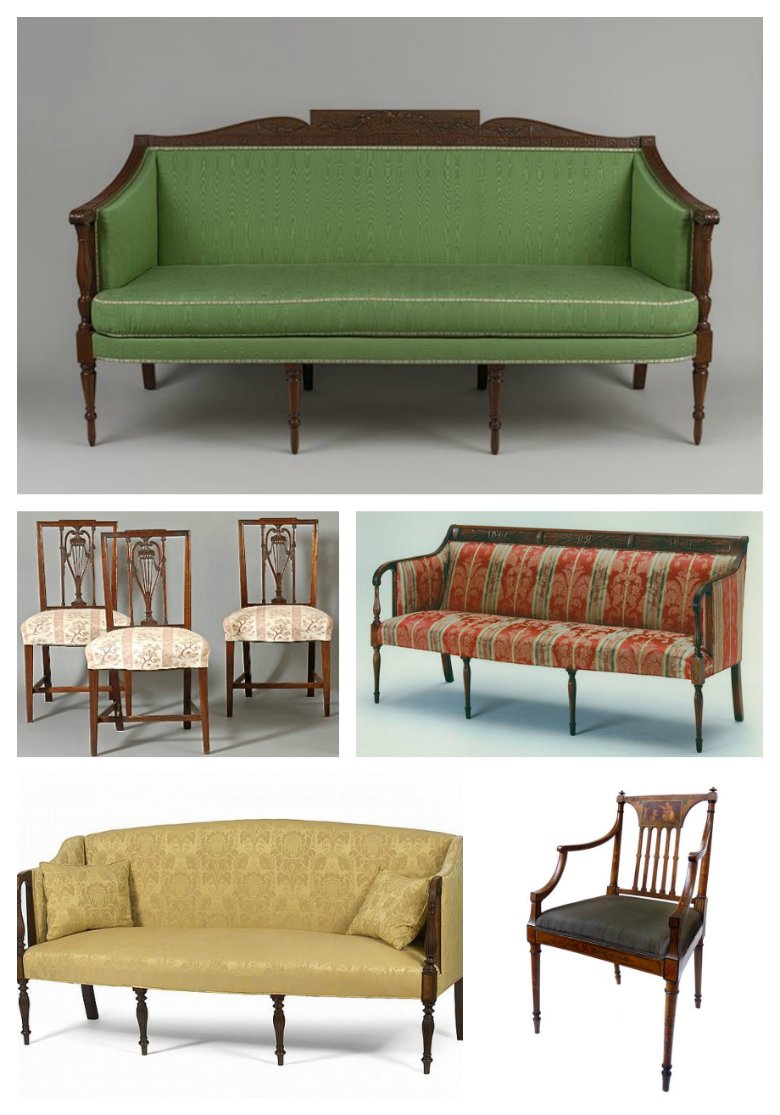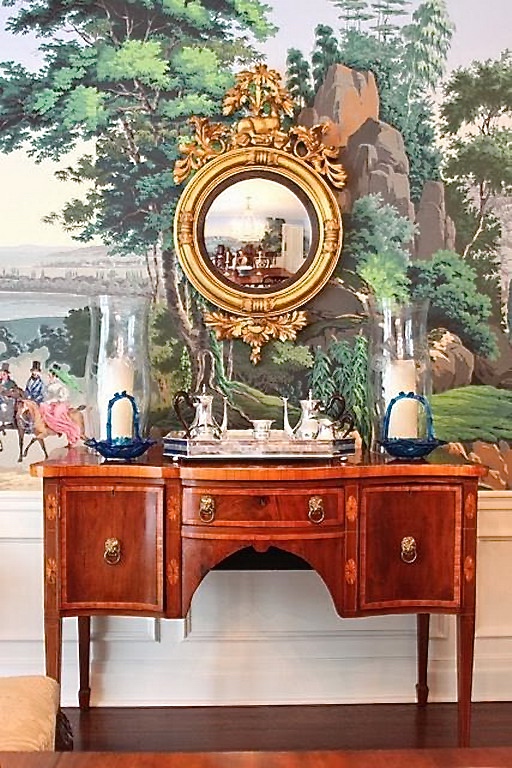DESIGN DICTIONARY: Sheraton Furniture
It can be tricky to identify the furniture designed by Hepplewhite, Sheraton and Chippendale, but there are noticeable differences. Sheraton and Hepplewhite furniture is slender, lighter and more graceful than Chippendale. In addition, Hepplewhite's shield-back chairs are his most iconic design, and it is easy to spot them. But how do you identify Sheraton furniture and distinguish it from Hepplewhite? It is not always easy.
Let's take a look.
Background
First let's look at history. Thomas Sheraton's most popular designs date from around 1790 to 1820. He published them in design books entitled "The Cabinet Dictionary" (1803) of engraved designs and the "Cabinet Maker's & Upholsterer's Drawing Book" (1791) of furniture patterns. American furniture makers, Duncan Phyfe, Samuel McIntire, and John and Thomas Seymour, copied his style.
Sheraton was influenced by French furniture and his designs feature elements of the Louis XVI and Directoire style. His later work shows a shift to the Empire style and is increasingly heavier.
Now let's examine the furniture.
Consider the Overall Shape
Sheraton furniture tends to be more rectilinear than the curvier Hepplewhite furniture. Arms in Sheraton furniture flow directly from the back, without a break (also known as cabriole arms). Backs in sofas and chairs are often square. Chairs had flat, decorated openwork splats for backs. A rectangular sofa, with reeded legs, such as the ones below is a quintessential Sheraton style.
Sheraton sofas and chairs
Look At the Legs
Although this is not a hard fast rule, Sheraton legs often tend to be rounded while Hepplewhite's are typically square. Sometimes, the legs are reeded or fluted to resemble Greek columns. Sheraton legs sometimes are joined by a stretcher or the back legs are splayed. The legs terminate in a simple foot.
Ornamentation
Next, consider the ornamentation. Contrasting veneers and inlays often decorate Sheraton furniture, requiring the use of several woods in one piece. The base wood was frequently satinwood, mahogany or beech. Inlays were in tulipwood, sycamore and rosewood. In America, makers would employ the wood that was on hand locally, so you also see Sheraton furniture in maple, cherry and walnut. When not decorated with contrasting woods, Sheraton furniture was painted or even japanned.
Hepplewhite furniture is more likely to rely on carved ornament.
Common motifs found in the inlay or painted decoration of Sheraton furniture include banding, oval shapes, drapery swags, lyres, ribbons, fans, feathers, urns and flowers.
Also consider the hardware and look for lion’s heads, stamped plates, rosettes and urns on Sheraton furniture.
To compare, here is a Hepplewhite sideboard. It has much less inlay ornamentation.
Other Characteristics
Cabinet tops in Sheraton furniture often featured a modified pediment. Sheraton seemed to delight in surprising the owner. For example, he included secret drawers in his case pieces and favored innovative sliding mechanisms, such as tambour doors, on desks, secretaries and tables. In addition, furniture could have two uses--often appearing as one type and then converting into another.
xSheraton secretary with sliding tambour doors and pull-out desk.
Finally, Sheraton popularized the use of fabric behind glass in cabinets, bookcases and sideboards.
Final Tip
Since Sheraton furniture was the most reproduced style during the American Federal period, the odds favor that an American antique is Sheraton. Like Hepplewhite, Sheraton's furniture designs are timeless. They are still made today.
Photo credits: First photo, a reproduction Sheraton chair based on one in the Victoria and Albert Museum. Sunny room photo by Nancy E. Hill. Painted chair. Entrance with country Sheraton piece. Sofa and chair collage; green sofa attributed to Samuel McIntire: Sofa (46.171.1a,b) | Heilbrunn Timeline of Art History | The Metropolitan Museum of Art, yellow sheraton sofa. Collage of case pieces and tables, sewing tableSheraton secretary with sliding tambour doors.Zuber wallpaper sideboard Hepplewhite sideboard.











